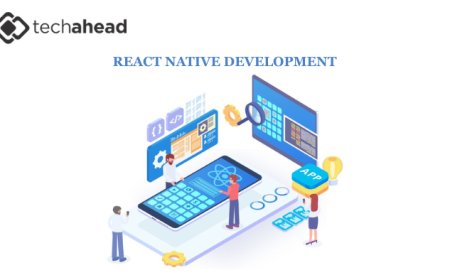Top Recruitment Models for Building Stronger, Smarter Teams

The goal of hiring the appropriate individuals is to create a team that can develop, adapt, and guide your company into the future, not only to fill positions. How you employ is just as important as who you hire in the fast-paced, skills-driven market of today.
Thats where the concept of a recruitment model comes in.
The methodical strategy a company use to draw in, engage, and onboard talent is known as a recruitment model. Selecting the appropriate recruitment model can have a big impact on cost-effectiveness, culture, and performance for both startups and multinational corporations.
In this article, well explore the top recruitment models that help companies build stronger, smarter teams and guide you on how to choose the one that best fits your goals.
What Is a Recruitment Model?
A recruitment model is more than just a hiring strategy its a system. It defines:
-
The process of hiring (in-house, outsourced, hybrid)
-
The structure of your recruiting team
-
The tools and platforms used
-
The cost model and KPIs you track
Choosing the right model means youre not just reacting to hiring needs; youre building a proactive talent engine.
Why It Matters
The recruitment model you adopt influences:
-
Time-to-hire
-
Cost-per-hire
-
Candidate experience
-
Cultural fit
-
Long-term retention
Burnout, bad hires, and decreased productivity are the results of a weak model. A solid one helps you draw in top talent that stays with you and scale sustainably.
Top recruitment models to consider
Lets break down the most effective recruitment models companies use today each with its strengths and ideal use cases.
1. In-House Recruitment Model
Best for: Mid-to-large companies with ongoing, predictable hiring needs.
The entire hiring process, from finding applicants to onboarding, is managed by an internal team. They are perfect for positions where alignment is essential since they have a thorough understanding of your culture, brand, and values.
Pros:
-
Consistent employer branding
-
Strong collaboration with internal departments
-
Better control over candidate experience
Cons:
-
Higher fixed costs (salaries, tools)
-
May lack scalability for sudden growth spurts
Ideal when: You want long-term recruitment continuity and cultural alignment.
2. RPO (Recruitment Process Outsourcing) Model
Best for: Companies seeking scalability, speed, and specialized hiring expertise.
RPO involves outsourcing all or a portion of your hiring process to an outside partner. The partner is in charge of strategy, sourcing, and administration, but you still have the last say in recruiting decisions.
Pros:
-
Scalable up or down
-
Access to advanced tools and data
-
Frees up internal resources
Cons:
-
Less internal knowledge of company culture
-
Requires ongoing coordination and SLAs
Ideal when: You're growing fast or entering new markets and need help managing high-volume hiring.
3. Staffing Agency / Contingency Model
Best for: Short-term or urgent hiring needs, especially for hard-to-fill roles.
You only pay when the agency fills the position. This model is transactional but effective when internal resources are stretched.
Pros:
-
Fast access to pre-vetted candidates
-
Zero upfront cost
-
Flexibility to scale
Cons:
-
Lower candidate loyalty
-
High per-hire cost
-
Limited brand control
Ideal when: You need specific talent quickly or dont have an internal recruiter available.
4. Embedded Recruitment Model
Best for: Startups and growing businesses that need flexibility and strategy.
In this model, external recruiters integrate with your internal team and work under your brand. It's a blend of outsourcing and in-house recruiting.
Pros:
-
Flexible and scalable
-
Strong collaboration
-
Maintains your employer's brand
Cons:
-
Requires a close working relationship
-
May need time to onboard external team members.
Ideal when: You're not ready for a full in-house team but want strategic hiring support.
5. Freelance or Gig-Based Model
Best for: Early-stage startups or project-based hiring.
Platforms like Upwork, Fiverr, and Toptal allow companies to tap into a global pool of freelancers. It's cost-effective and agile.
Pros:
-
Budget-friendly
-
Quick onboarding
-
Access to niche skills
Cons:
-
Less loyalty or long-term fit
-
Can lack engagement or accountability
Ideal when: You need talent on-demand or want to test a candidate before committing long-term.
Choosing the Right Recruitment Model: What to Consider
Every business is different, and the right hiring approach depends on your goals and context. Heres how to decide:
1. Hiring Volume
-
Low: Freelance or contingency
-
Medium: Embedded or in-house
-
High: RPO or agency support
2. Business Stage
-
Startup: Gig/freelancer or embedded model
-
Scale-up: RPO or hybrid
-
Enterprise: In-house or strategic outsourcing
3. Budget
-
Tight: Freelance or contingency
-
Moderate: Embedded or staff augmentation
-
Flexible: RPO or in-house
4. Culture Fit
-
In-house and embedded models foster better alignment
-
Outsourced models work best for skill-based roles, not cultural ones
Recruitment Models Are Evolving
As hybrid work, AI tools, and global hiring become mainstream, recruitment models are evolving too.
Future-forward teams are now blending models:
-
Outsourcing initial sourcing to RPO providers
-
Using in-house teams for interviews and onboarding
-
Bringing in freelancers for peak periods
This hybrid approach allows for cost efficiency, agility, and cultural integrity.
Final Thoughts
Recruitment is a growth strategy, not just an HR task. It also requires a model that is in line with your company's beliefs, budget, and goals, just like any other strategy.
Take some time to assess where you are now and where you want to be if you're not sure whether to work with an agency, hire in-house, or try a hybrid approach.
Because when you choose the right recruitment model, you dont just fill roles you build a stronger, smarter team that fuels your long-term success.






































